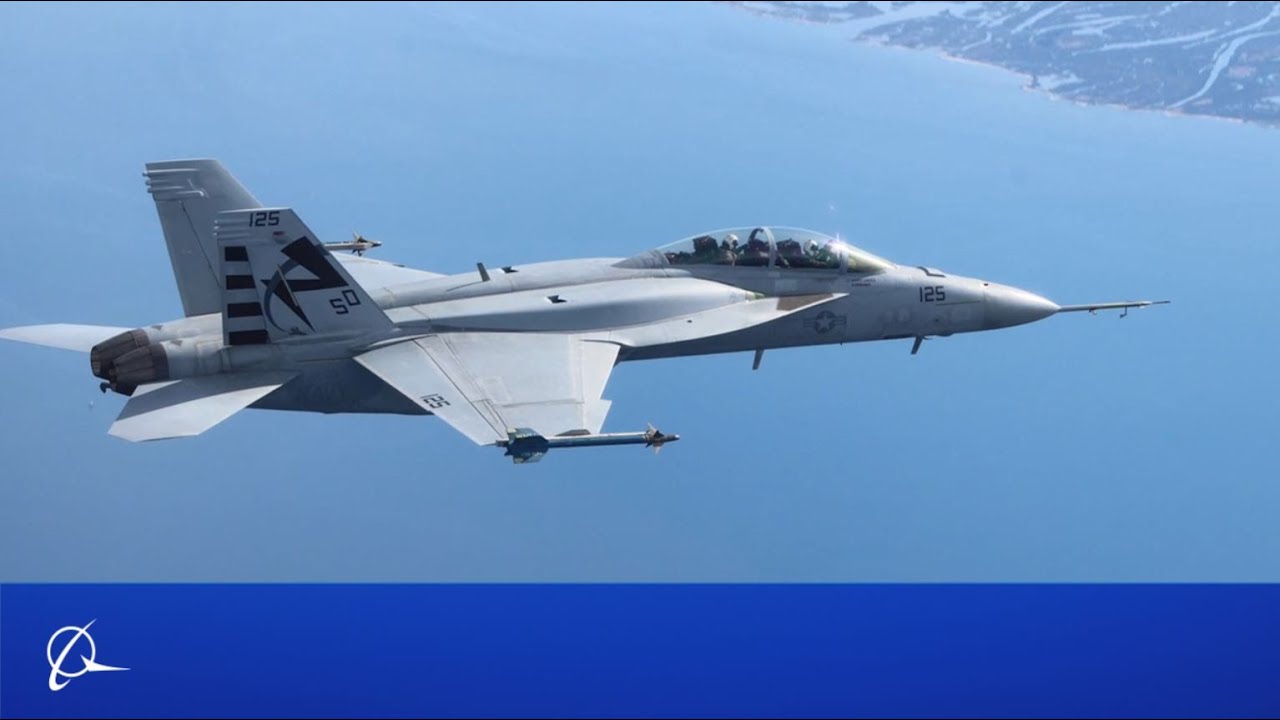7 Crashes In One Year! What’s Going Wrong With F/A-18 Super Hornets & Its EW Variant Aircraft?

The U.S. Navy’s F/A-18 Super Hornet fleet has faced a troubling string of incidents over the past year, including five Super Hornet crashes and two additional EA-18G Growler losses, its electronic warfare (EW) variant.
In a mysterious incident on October 26, a two-seater F/A-18E/F Super Hornet crashed into the South China Sea “while conducting routine operations” from the USS Nimitz.
The aircraft was assigned to the “Fighting Redcocks” of Strike Fighter Squadron 22. “Both crew members successfully ejected and were also safely recovered by search and rescue assets assigned to Carrier Strike Group 11,” the US Pacific Fleet said in a statement.
Incidentally, the crash came just 30 minutes after a US Navy MH-60R Sea Hawk helicopter, assigned to the ‘Battle Cats’ of Helicopter Maritime Strike Squadron 73, went down in the waters of the South China Sea while conducting routine operations from the same carrier.
The incident has rattled the US Navy, and investigations are currently underway to determine the cause of this unprecedented dual crash.
The incidents of two different aircraft crashing within hours of each other are extremely uncommon.
In August 1976, two US Air Force C-141 Starlifter transport aircraft from the Military Airlift Command crashed in separate accidents just hours apart, resulting in 41 total fatalities.
In 2016, a US Air Force F-16 from the Thunderbirds squadron experienced an unknown malfunction and crashed in a field near Peterson Air Force Base, Colorado. Just hours later, an F/A-18 Hornet from the U.S. Navy’s Blue Angels squadron crashed into a residential neighborhood in Smyrna, Tennessee.
Late last year, the Super Hornets were deployed aboard aircraft carriers dispatched to the West Asian region to battle the Yemen-based Houthis. At least three aircraft were lost during this deployment alone, which stretched well into the summer of 2025.
In December 2024, a Super Hornet was shot down by the US missile cruiser USS Gettysburg, in the case of friendly fire. The aircraft was part of the aircraft carrier USS Harry S. Truman and was on a mission to defend commercial vessels from Houthi attacks in the Red Sea when the incident occurred.
At the time, the absence of positive target identification and the lack of human situational awareness were believed to be potential causes of the incident. The incident demonstrated that, despite rapid technological advancements, the fundamental causes of fratricide remain unchanged.
Later that year, in April 2025, an F/A-18E/F Super Hornet went overboard when the USS Harry S. Truman did an evasive maneuver in the face of fire from Yemen-based Houthi rebels.
“The F/A-18E was actively under tow in the hangar bay when the move crew lost control of the aircraft. The aircraft and tow tractor were lost overboard,” the US Navy said in a statement at the time. This marked the second Super Hornet loss in the region.
While the service was still grappling with the loss of the second Super Hornet in the region, a third went down just eight days later.
On May 6, 2025, a two-seater F/A-18F Super Hornet belonging to the Strike Fighter Squadron VFA-11, also known as the Red Rippers, plunged into the sea. This aircraft crashed during an attempted nighttime landing on the aircraft carrier, as the aircraft’s hook could not catch the carrier’s arresting wire, as per preliminary reports from the time.
“The arrestment failed, causing the aircraft to go overboard. Both aviators safely ejected and were rescued by a helicopter assigned to Helicopter Sea Combat Squadron 11,” an unidentified defense official told USNI News. “The aviators were evaluated by medical personnel and assessed to have minor injuries. No flight deck personnel were injured.”
When the service finally thought the worst was behind it, an F/A-18E/F Super Hornet went down off the coast of Virginia on the morning of August 20, 2025. The aircraft assigned to the Strike Fighter Squadron 83 crashed during a routine training flight. The pilot had ejected and was rescued by the search team.
In addition to these, the US Navy also lost two EA-18G Growlers, which are the electronic warfare (EW) equivalent of the F/A-18E Super Hornet, in the past year.
One incident occurred in October 2024, the aircraft reportedly crashed during a routine training flight and turned out to be fatal, as both pilots were killed. Meanwhile, the other incident took place in February 2025 in San Diego Bay, near Naval Base Coronado, California, USA, during a routine training flight, but both pilots ejected and survived.
With these losses, the Super Hornet’s reputation may have taken a beating.
Used for close air support, strike missions, and air superiority, the Super Hornet is the service’s primary carrier-based fighter even though it operates the stealthy F-35C.
Moreover, there is no direct, dedicated alternative to the EA-18G Growler in the US military’s inventory that matches its specific combination of carrier-based operations, advanced jamming capabilities, and SEAD/EA mission profile.
Perhaps this is why it signed a contract in March 2024 for 17 additional Block III Super Hornets for $1.3 billion, with deliveries expected only by spring 2027.

India Rejected Super Hornets
The Super Hornet, which forms the backbone of the US carrier operations, was battling against the Rafale-M for the Indian Navy’s Multi-Role Carrier-Borne Fighters (MRCBF) program.
The Super Hornet lost to the French Rafale-M fighter jet earlier this year, and Indian decision makers would be breathing a sigh of relief after a series of Super Hornet accidents. Even Rafale jets have had some negative PR during the clash with Pakistan, but that’s a different topic.
After years of evaluation, the Indian Navy finalized the procurement of Rafale-M, which edged out the Super Hornet in a tightly fought contest due to factors such as interoperability with the Indian Air Force (IAF) Rafale fleet, ease of integration, and overall lower lifecycle costs.
However, experts stated that the Block III variant of the Super Hornet offered to the Indian Navy was an extremely capable aircraft, with few drawbacks, including its heavier weight.
Both aircraft met the requirements stipulated by the Indian Navy during their shore-based demonstration in Goa.
Speaking to EurAsian Times on a previous occasion, an ex-Indian Navy pilot said that both aircraft are on par. “The only issue I can think of is that the F-18 is a heavier aircraft, and the Rafale-M is lighter. So, when it comes to an arrestor landing on the aircraft carrier, Rafale has more flexibility,” he said, requesting anonymity. The statement was significant as this naval aviator had flown both aircraft.
While the F/A-18 would have given the Indian Navy interoperability with the US Navy, logistically, it would have been a costly affair.
The synergy between the IAF and the Indian Navy trumped any cooperation with a foreign service. Moreover, the resultant savings on training, repairs, and maintenance tipped the scales in favor of Rafale Marine. It has 85% of the common features of the IAF fighter jets.
Thus, it is safe to say that even though these factors favoured the Rafale-M, it was by no means an easy choice. The Super Hornet is a battle-tested, carrier-optimized multirole fighter that demonstrated its ability to meet the Indian Navy’s requirements during 2022 trials.
With its cutting-edge AESA radar, Distributed Targeting Processor-Networked (DTP-N), Advanced cockpit systems, and THE Infrared Search and Track (IRST), the Super Hornet was duly recognized as a force to be reckoned with.
However, after a string of crashes involving the F/A-18E/F Super Hornets, the Indian Navy would be relieved to have chosen the Rafale instead.
With India rejecting the aircraft and no foreign customers showing interest in the Super Hornet, Boeing’s production of new-build F/A-18E/F Super Hornet fighter jets at its St. Louis facility will likely be shuttered after the final deliveries.
- Questions and Answers
- Opinion
- Motivational and Inspiring Story
- Technology
- Live and Let live
- Focus
- Geopolitics
- Military-Arms/Equipment
- Ασφάλεια
- Economy
- Beasts of Nations
- Machine Tools-The “Mother Industry”
- Art
- Causes
- Crafts
- Dance
- Drinks
- Film/Movie
- Fitness
- Food
- Παιχνίδια
- Gardening
- Health
- Κεντρική Σελίδα
- Literature
- Music
- Networking
- άλλο
- Party
- Religion
- Shopping
- Sports
- Theater
- Health and Wellness
- News
- Culture

